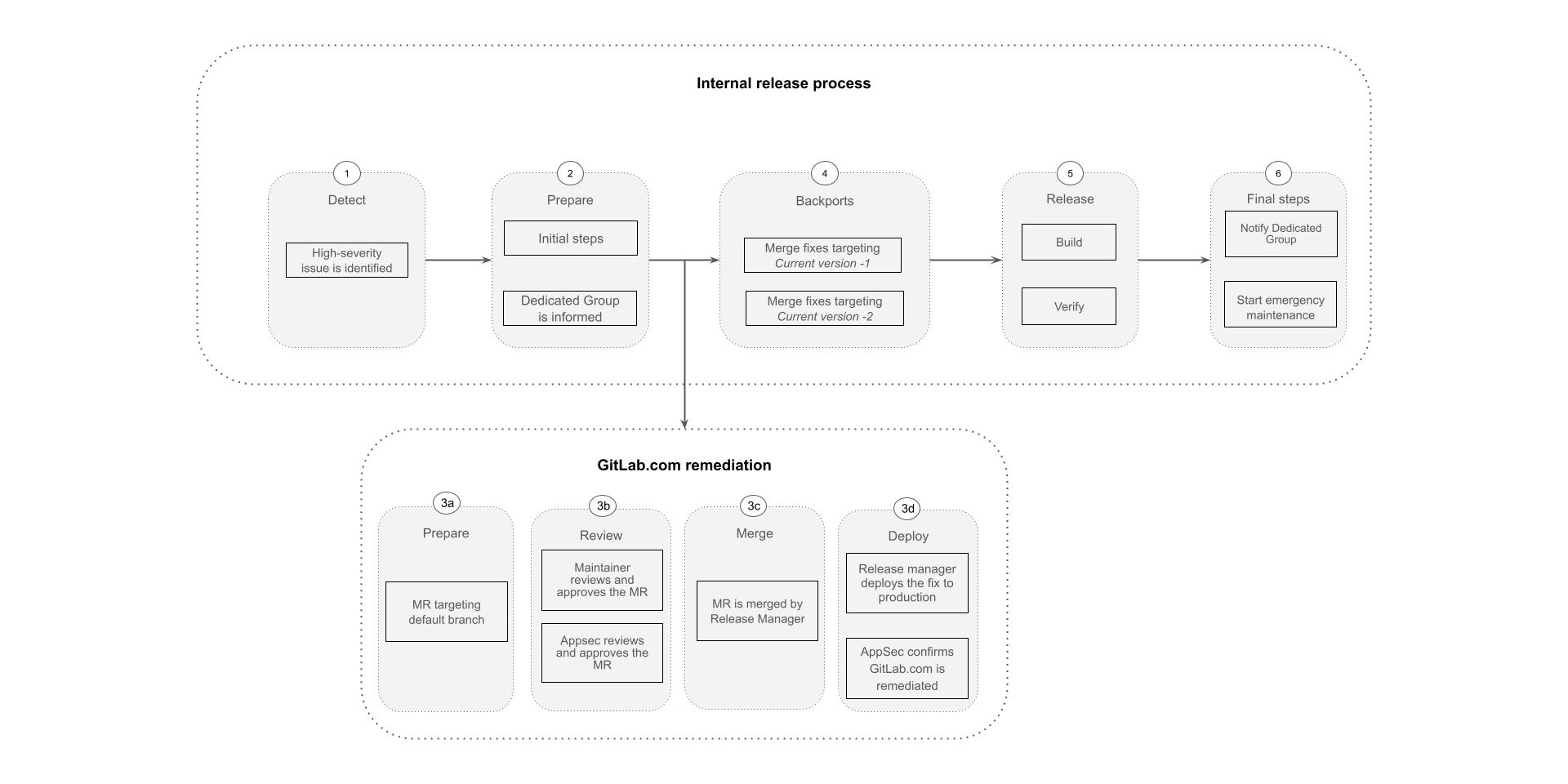Internal Releases
Internal release overview
Internal Releases are private releases of GitLab for our single-tenant SaaS instances. They allow us to remediate high-severity issues on Dedicated instances:
- As quickly and efficiently as on GitLab.com (SLA driven)
- Without version skips in the public packages
- Without disclosing vulnerabilities before a public patch release
Internal releases are performed according to a specific criteria:
- Addressed critical (S1)
fixes (bug or security vulnerability) that impact GitLab Dedicated availability: Security or bug fixes
- Security vulnerability: The SIRT team investigates a vulnerability and deems the issue to be of high severity.
- Critical bug: The Dedicated team reports a high-severity issue causing a performance degradation.
- Target the current minus one (N-1) and current minus two (N-2) GitLab versions
- Deliver fixes through a private channel before public disclosure
If you’re a GitLab engineer looking to fix a high-severity via an internal release, please follow the steps on the internal release runbook for GitLab engineers.
Internal release process
The end-to-end internal release process consists of the following stages:

An internal release has the following phases:
-
Detect: A high-severity issue (S1) impacting GitLab Dedicated availability is identified.
- Security vulnerability: The SIRT team investigates the vulnerability and deems the issue to be of a high severity.
- Critical bug: The Dedicated team reports a high-severity issue causing a performance degradation.
-
Prepare: The first step in the internal release process, when a release issue is created and stakeholders, including the GitLab Dedicated Group are notified.
-
GitLab.com remediation:
- The group relevant to the vulnerability/bug prepares the security fix on the GitLab security repositories.
- Release managers merge the fix to the GitLab default branch.
- The high-severity fix is deployed to GitLab multi-tenant production environment (GitLab.com).
- In case of a vulnerability, the AppSec team verifies that the vulnerability/bug has been remediated on GitLab.com.
-
Backports: Security merge requests targeting N-1 and N-2 stable branches are prepared by the relevant group associated with the vulnerability/bug.
- Engineers ensure the backports are ready to be merged (approvals, green pipelines, etc).
- Once the backports are ready to be merged, release managers merge them into the stable branches.
-
Release: The internal CNG images and Omnibus packages are built and uploaded to the pre-release channel.
-
Final Steps: Roll out the internal release packages to GitLab single-tenant SaaS instances.
- The GitLab Dedicated Group is notified.
- A Dedicated emergency maintenance process starts.
979066a8)
